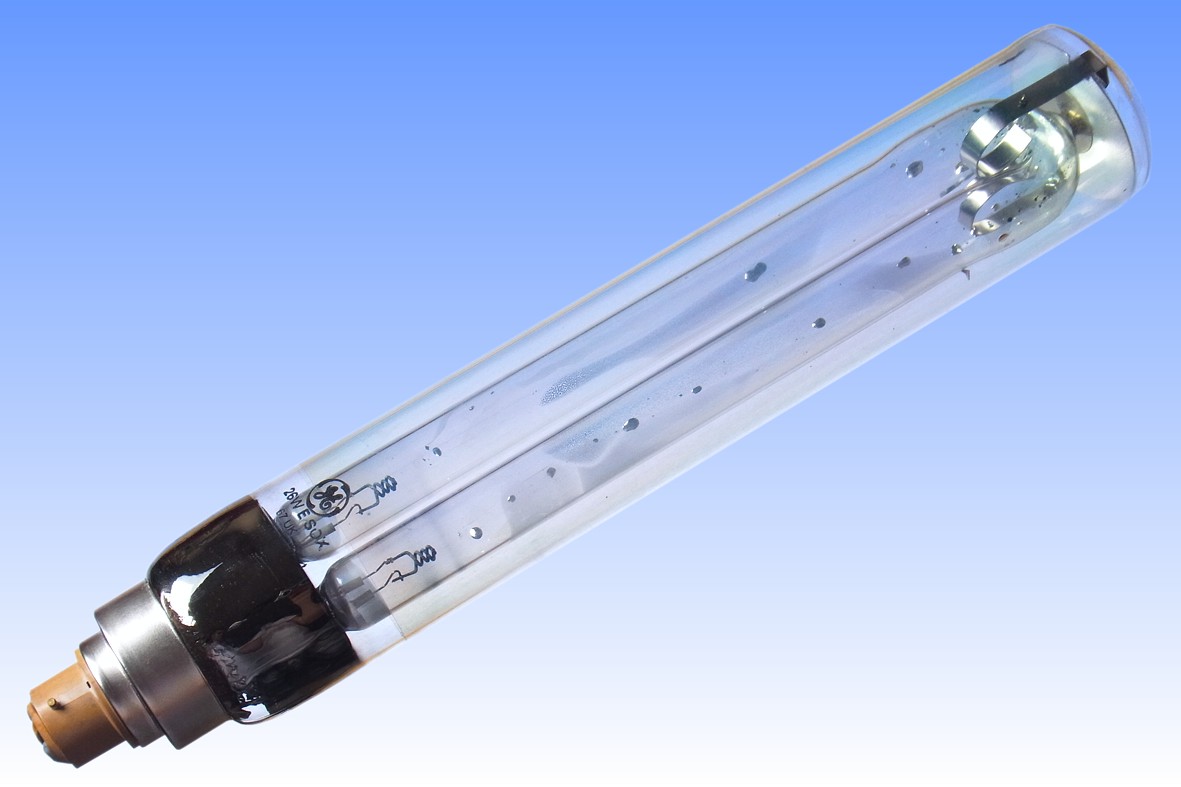
|
GE SOX-Economy 26W |

Alternatively, part of the efficacy gain can be achieved on normal SOX ballasts. This is possible due to the fact that the voltage of SOX-E lamps is lower than their dimensionally-equivalent SOX versions. The reason is improved thermal insulation around the U-bend, whose temperature is normally a little lower owing to the fact that the IR coating of the outer bulb cannot be applied around the domed end. Normally the bend is somewhat devoid of sodium vapour, and more of the neon gas filling is therefore ionised, which leads to a high lamp voltage. Improving the insulation at the bend brings more sodium into the vapour at that point, reducing the discharge in neon, and lowering lamp voltage.
Whereas the Philips SOX-E lamps were primarily marketed in European countries for use on the dedicated new low-current ballasts, in Britain they were almost exclusively employed as direct retrofits for SOX where the full efficacy gain could not be realised. That placed lower demands on the quality of the insulation, and the British-made Thorn/GE and Osram/GEC lamps employ a simple nickel-plated steel disc as the heat reflector around the bend, instead of the Philips close-fitting end cap and modified outer bulb shape. They deliver effectively the same performance on SOX ballasts, but are a little less efficient on SOX-E gear.




| Manufacturer: | General Electric USA | |
| Lamp Power: | 31 Watts (SOX gear) | 25 Watts (SOX-E gear) |
| Lamp Current: | 0.62 Amps (SOX gear) | 0.45 Amps (SOX-E gear) |
| Lamp Voltage: | 60 Volts (SOX gear) | 69 Volts (SOX-E gear) |
| Cap Type: | BY22d | Alkyde Insulator |
| Bulb Type: | T-50 | T-16 in eighths/inch |
| Bulb Finish: | Indium-tin oxide film | Soda-lime glass |
| Electrodes: | CCC-4 Beehive | Black W + BCT emitter |
| Arc Length: | ||
| Atmosphere: | Na | 99% Ne, 1% Ar | Outer: Hard Vacuum |
| Luminous Flux: | 4,060lm (@100h SOX gear) | |
| Luminous Efficacy: | 131 lm/W (@100h SOX gear) | |
| Colour Temperature & CRI: | CCT: 1700K | CRI: Ra -44 |
| Chromaticity Co-ordinates: | CCx: 0.574 | CCy: 0.425 |
| Rated Lifetime: | 16,000 hours | 80% flux & 80% survival |
| Warm-up & Re-strike time: | 9 minutes | Instantaneous |
| Burning Position: | Vertical cap up ± 110° | |
| Overall Length: | 311 mm | 12¼ inches |
| Light Centre Length: | 180 mm | 7 inches |
| Factory: | Leicester | England |
| Date of Manufacture: | July 2003 | Date Code: 67 |
| Original / Present Value: | GB £30.90 (1994) | GB £54.89 (2014) |
